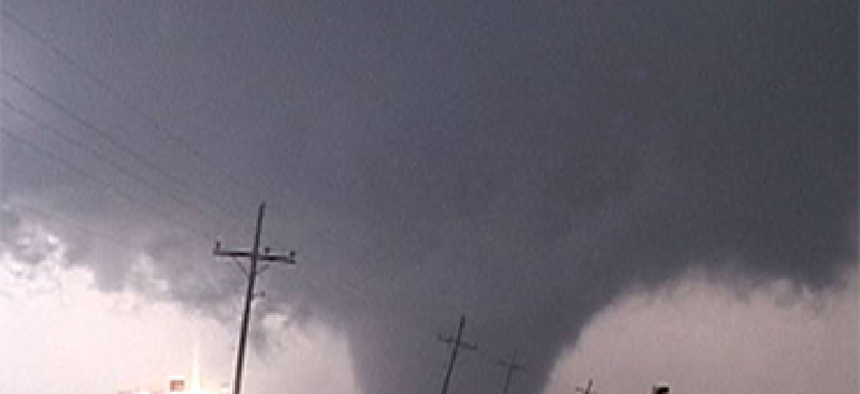Everybody talks about the weather …

The National Weather Service wants to do something about it, and has enlisted social scientists and data experts to devise social media and visualization strategies.

The National Weather Service is looking to go beyond just reporting the weather.
“It’s not good enough to be accurate and timely with our information,” NWS Chief Operating Officer John D. Murphy said at Washington Technology’s inaugural industry day May 28. “People need more.” (WT is a sister publication of FCW.)
Laying out IT needs and goals to the assembled contractors, Murphy said the new push is to deliver actionable information to the American people.
“People need to know exactly how the weather will impact them,” he said.
In the case of a rash of tornadoes in Alabama in 2011, Murphy recalled, “the weather was very well forecast, and yet in the end it turned out to be the deadliest tornado outbreak since 1932.”
The question that vexed the NWS: “Why aren’t they listening?”
To help get people to listen, the National Oceanic and Atmospheric Administration (projected fiscal 2016 IT budget: $527.7 million) enlisted the help of social scientists and data experts to devise social media and visualization strategies, and some 1,500 “Weather-Ready Nation” ambassadors are working to improve the nation’s disaster readiness.
NWS is “a stone’s throw away” from being able to layer forecasts over local maps, showing people, for instance, what neighborhoods will flood in a storm, Murphy noted.
Going forward, Murphy said, NWS will be boosting communications efforts, focusing on dynamic, visual ways to communicate weather impacts, and on the infrastructure front redundancy will be key so that a bumpkin with a backhoe who digs through a single cable can’t jeopardize the service’s mission.
Murphy also cited the need for consistency in forecasting and owned up to what many see as a national mistake: the forecasting of the New York City blizzard that wasn’t.
“We’re convinced those actions saved millions of dollars,” Murphy said of the decision to essentially shut down the Big Apple for a storm that ultimately didn’t wallop the city.
As the NWS seeks to continue to improve its forecasting and communications, Murphy noted, innovative IT and beefed-up computing power will be crucial.
Murphy’s presentation was part of a broader “Department of Commerce Industry Day,” hosted by Washington Technology, which included presentations from many of the eclectic department’s organs: the U.S. Patent and Trademark Office, the Census Bureau and the National Institute of Standards and Technology.
Future industry days are slated to focus on the Defense, Transportation and Treasury departments.





